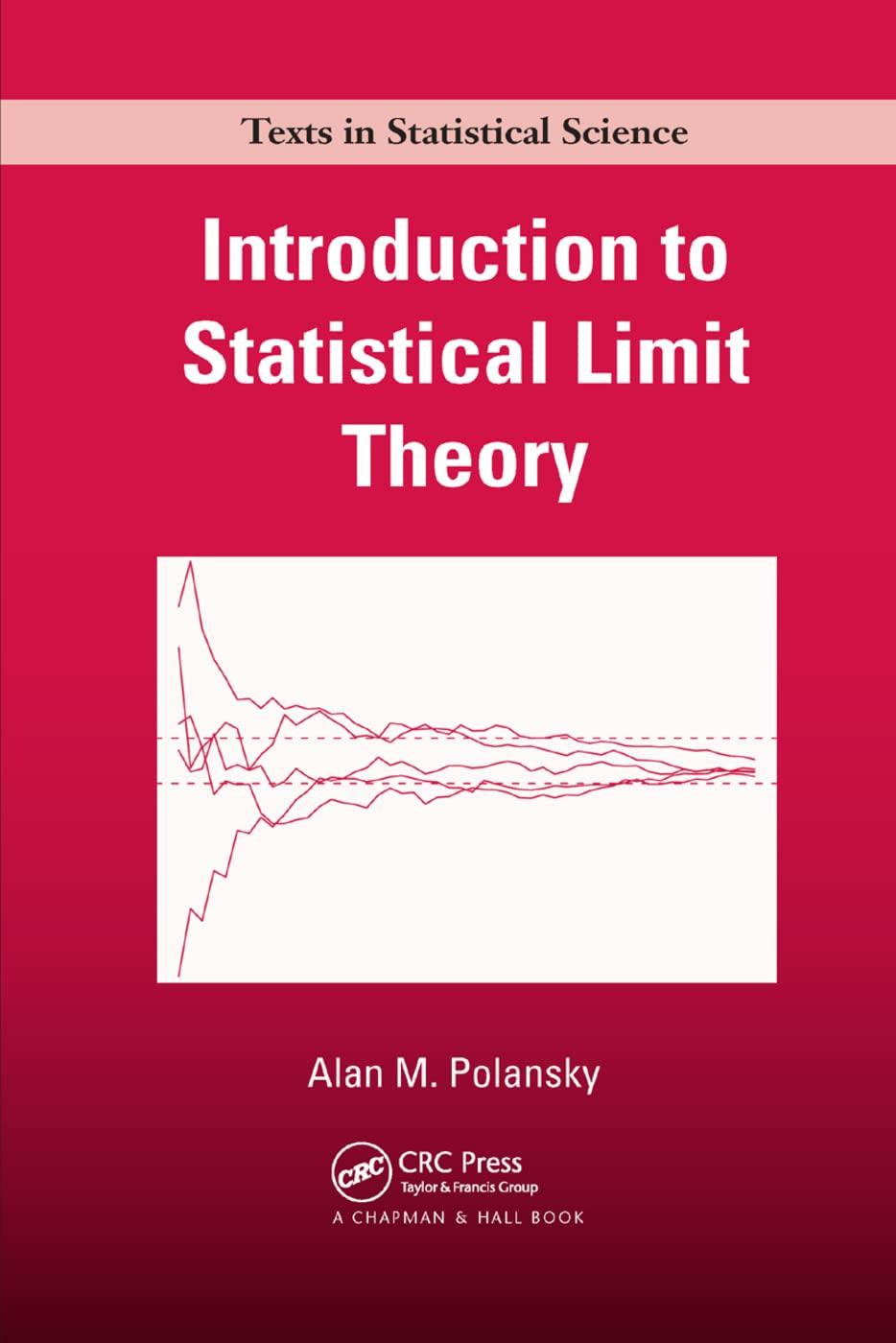Let (mathbf{X}_{1}, ldots, mathbf{X}_{n}) be a set of two-dimensional independent and identically distributed random vectors from a
Question:
Let \(\mathbf{X}_{1}, \ldots, \mathbf{X}_{n}\) be a set of two-dimensional independent and identically distributed random vectors from a distribution \(F\) with mean vector \(\boldsymbol{\mu}\). Let \(g(\mathbf{x})=x_{2}-x_{1}^{2}\) where \(\mathbf{x}^{\prime}=\left(x_{1}, x_{2}ight)\). Define \(\theta=g(\boldsymbol{\mu})\) with \(\hat{\theta}_{n}=g\left(\overline{\mathbf{X}}_{n}ight)\). Let \(R_{n}(\hat{\theta}, \theta)=n^{1 / 2}\left(\hat{\theta}_{n}-\thetaight)\) and \(H_{n}(t)=P\left[R_{n}\left(\hat{\theta}_{n}, \thetaight) \leq tight)\) with bootstrap estimate \(\hat{H}_{n}(t)=P^{*}\left[R_{n}\left(\hat{\theta}_{n}^{*}, \hat{\theta}_{n}ight) \leq tight]\). Using Theorem 11.16, under what conditions can we conclude that \(d_{\infty}\left(\hat{H}_{n}, H_{n}ight) \xrightarrow{\text { a.c. }} 0\) as \(n ightarrow \infty\) ? Explain how this result can be used to determine the conditions under which the bootstrap estimate of the sampling distribution of the sample variance is strongly consistent.
Step by Step Answer:






